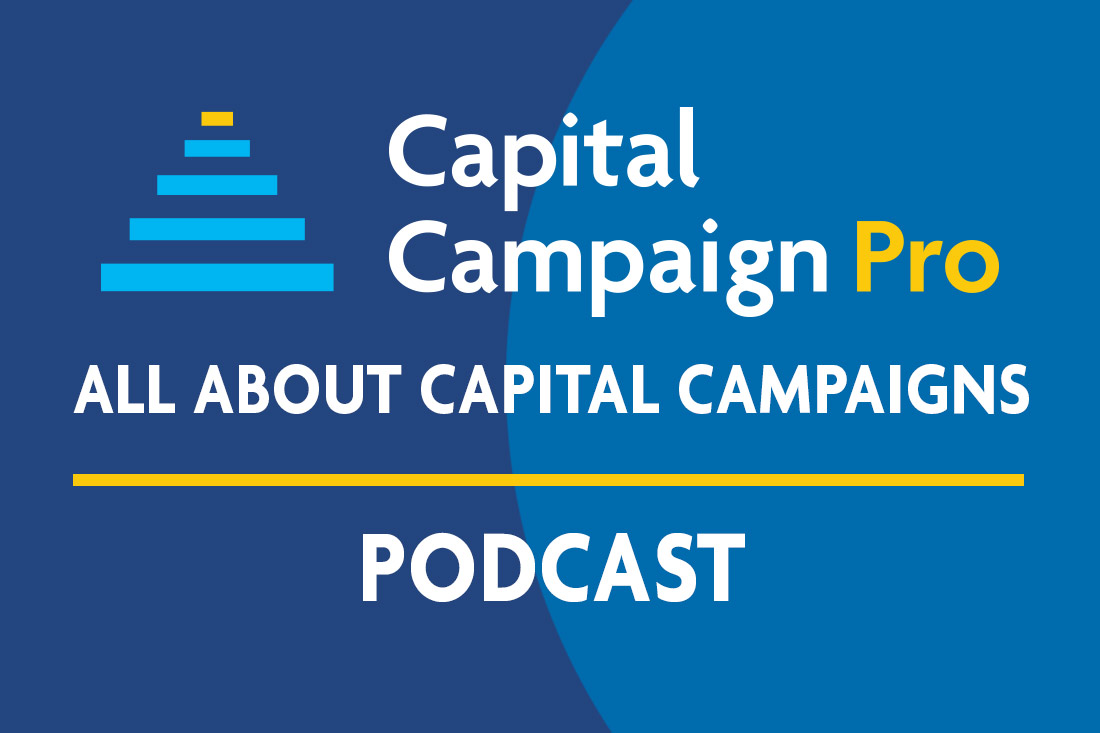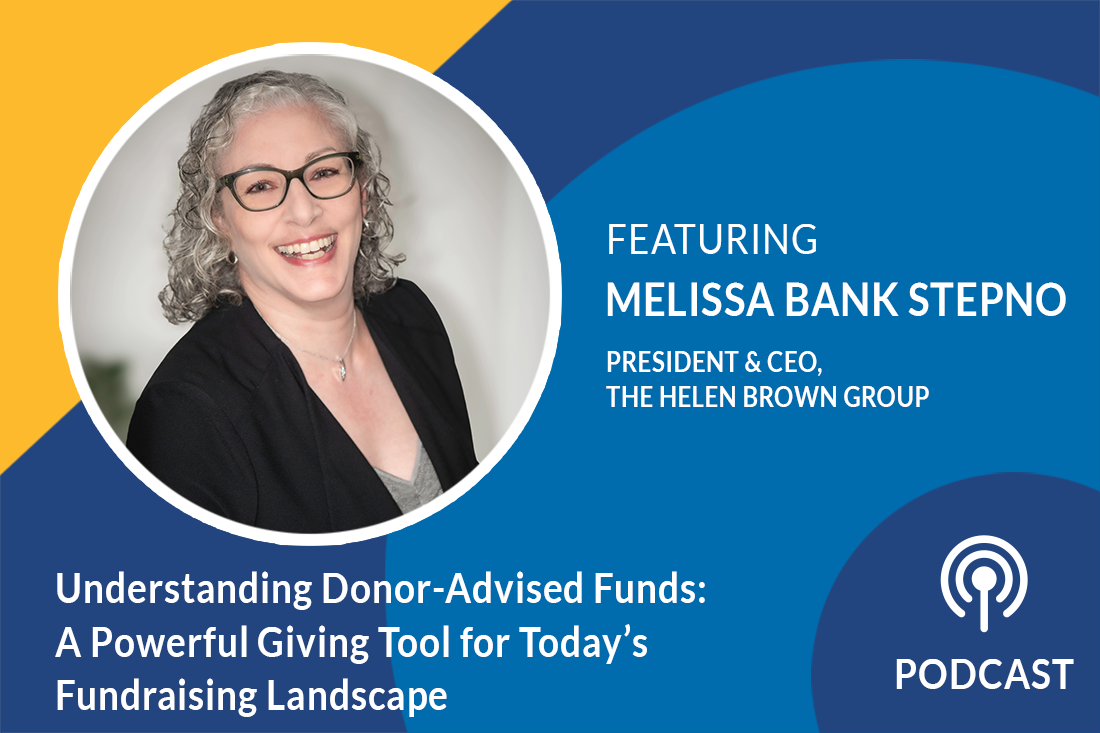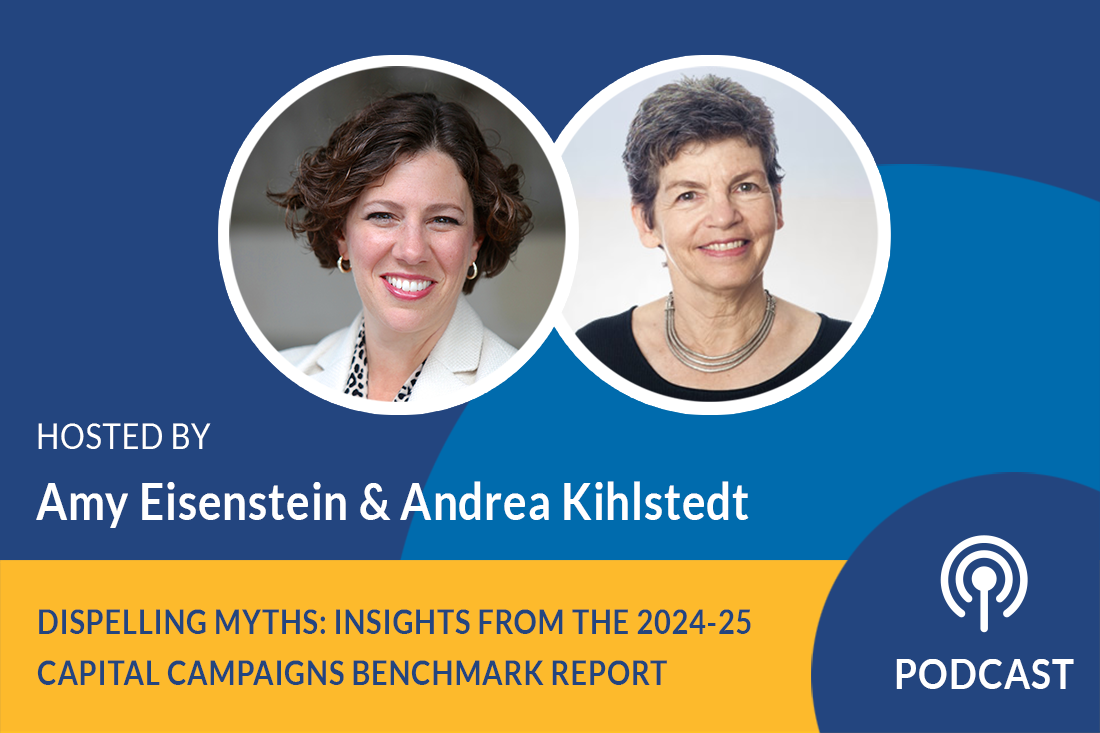Podcast: Leadership Interviews – How and Why You Should Talk to Your Top 20 Prospects

Season 2, Episode 22
How often do you talk to your top prospects when you aren’t asking them for gifts? In today’s Toolkit Talk, campaign experts Amy Eisenstein and Andrea Kihlstedt discuss why you should have leadership interviews with your most important donors, and how to structure that process.
Listen Now:
This episode was recorded as part of a live webinar held Monday, January 17, 2022. To participate in future webinars, register at ToolkitTalks.com.
Andrea Kihlstedt:
There are many organizations that I have worked with, that we have worked with at Capital Campaign Pro, that if we were to ask them how often they actually have meaningful, deep, probing conversations with their most important donors, when they are not asking them or getting ready to ask them for gifts, the answer is not always the answer we would wish to hear. What do I mean by that?
Why to Talk to Your Top Donors BEFORE Your Campaign
The other way to say that is we think, and you should think, that it is really important to be talking to your largest donors with some frequency, not just because you’re asking them for money, not just because you want to make nice, but because you want to know their opinions. Right there, undoubtedly are some things about your organization going forward, that it would be helpful if you had the opinions of your largest, most potentially helpful people in your community.
So they may or may not be donors. They maybe leaders in your community that you could be going out to. But in our experience, people don’t do that very much, right? It’s sort of the day to day business of your organization and a fundraising gets in the way. And one of the things that a Capital Campaign does is that it structures that process. It says, all right, you’re going to have a big Capital Campaign to raise significant money to move your organization in perhaps a new or bigger direction. Maybe you should take the time to go and talk to your top 20 or 30 prospective donors BEFORE you are ready to pull the plug on that, before you are ready to say, okay, this is what we’re going to do. And here we go. And if you take that seriously, you create the context for going to them, so that they know that they are community leaders and they are talking to a number of people. They have been selected because they’re community leaders. Chances are they’re going to be happy to talk to you.
Now, what we normally call a feasibility study is one of the ways in which you can do that. It’s not the only way, but it’s one of the ways and we extrapolate from that to say, all right, there are many ways to do a feasibility study, but even without a feasibility study, you can say, well, we’ve just finished a strategic plan, or we’re just starting a strategic plan. Why don’t we invite or involve our top 10 or 20 most influential people in that process? So we’re actually becoming partners with them. Amy, does this make sense? And what would you add to this?
Amy Eisenstein:
Yeah, I think whenever I’m teaching major gift fundraising, we always talk about asking donors for advice before asking them for money, to engage donors, to involve them. And one of the top ways is to ask for their advice. But I think it is baffling to people as to what kind of advice to ask for. And when you’re thinking about a campaign or getting ready for a campaign, you have the perfect opportunity to go talk to your biggest potential donors and community leaders about the project and get their feedback. So you don’t want to necessarily ask whatever your specialty is, right?
So if you’re an animal rescue organization, your donors aren’t going to give you feedback on how to rescue animals per se. That’s your area of expertise, but they can give you their thoughts and opinions about the project… Oh, that’s my dog. Speaking of animals, go ahead.
Speaking of animals, that’s Goldie. That’s Amy’s wonderful dog, Goldie. And just to stay on that idea, they won’t tell you how to rescue Goldie, but they may weigh in about your plans to grow, for example, to set up a new clinic. They may help you understand things about the community that you didn’t know. They may talk to you. You may be able to go and talk to them about zoning, if you’re going to need a zoning change. They may talk to you about who in the community is best set to help you find a new location, right? There are all kinds of things you can ask people who are knowledgeable and leaders in your community that you can ask them about that they really can help you figure out that much better than you could figure it out.
Talking to Donors Can Help You Find Solutions to Campaign Problems
Amy, I just had a conversation like that with a prospective donor. Not a prospective donor, a client that we’re working with. And she said we haven’t been able to tie down a piece of property yet. They thought they had one and then the property fell way. Something happened. I said, why don’t you pull together a group of five or six of your largest owners, people who are most important to you and why don’t you see if they’ll help you come together two or three times to say, all right, who can we get in this community to help us find a piece of property? And what you may find is that the most influential people in your community are better able to help you find property than you on your own would be.
Amy Eisenstein:
Right. Their networks, they’re connected, their different circles. Andrea, that I think reminds me, we often talk about going out to your top potential donors for advice and for conversations and for feedback prior to the campaign. But your example just now reminded me that throughout the campaign, there are opportunities to engage your biggest potential donors and really get them to help you in lots of ways, in addition to their financial contributions, that they may have access to resources, knowledge in things that… And they would be delighted to contribute that way in addition to financially. And so, don’t forget no matter where you are in the campaign to use your donors for their expertise, for their networks. And use them is a loaded word. But I mean, what-
Andrea Kihlstedt:
Engage them and ask them for help.
Amy Eisenstein:
Right. Authentically them. Really use them in a positive way so that they can be part of the change that your organization is making.
Andrea Kihlstedt:
So, yeah, it’s sometimes I think that we, all of us, all of us in the nonprofit world are intimidated by people who have power. And I use the word power in a positive way, but it’s easy to be scared of it, right? People who have a great deal of money, people who have a great deal of influence for one reason or another in your community, maybe they have family ties and connections. It’s easy to sort of separate yourself from them and think that they won’t want to help you. But you have to understand that people who have power really can make a difference to you. And that often they are perfectly willing to talk to you. You have to ask them for something that they are actually qualified to help you with. And you don’t want to go in and say, “Come to 50 meetings over two years.”
Asking Donors for Advice Works Well
You want to say, “Can I come and ask you for are some advice?” And then, it’s really that simple and have a very specific piece of advice in mind, like this real estate business is one, but only one of many things you could be asking for. Now, Amy, let’s talk for a minute about feasibility studies because that’s the sort of standard that in a… Well, before we do feasibility studies, I want to say one thing. We and I have certainly said many times over many years, be sure to ask donors for advice before you ask them for money. And I do agree with that. However, it always sort of ranks me a little, even when I say it, it rankles me. So why does it rankles me… Is that a word? I don’t know.
Amy Eisenstein:
Yeah. I know what you mean.
Andrea Kihlstedt:
You know what I mean. It rankles me because it sounds manipulative. It doesn’t sound authentic. And that makes it feel lousy. The real idea underneath all of this is not that you should be manipulating them. The idea is that people who have real resources, who have power, who have connections, who have clout in your community can help you accomplish a great many things. And that you should always be thinking about how to tap into that network of help.
Now by doing that, you also will bring them closer to your organization and the chances are good that those people will become more engaged and that they will eventually give more generously than they might have given otherwise. But I like in some way to try to separate those two things out and to encourage you all to understand that people do have power to make things happen. When they have power, they can make things happen more easily. And that if you can sort of put your anxiety aside and actually go and ask people if they’re willing to help you or give you their suggestions and connect you to people, it’s amazing how far you’re going to get.
Amy Eisenstein:
I think the bottom line is that you want to genuinely and authentically ask their opinion and advice or go to them when you need an answer and make it clear from the outset that you may not be able to use or do exactly what they hope. You may say we’re going to five people to brainstorm this, to workshop this, to figure this out. And so, occasionally donors get frustrated if they’ve made a suggestion and you don’t take it up or aren’t able to take it up for whatever reason. So you can make it clear that you’re coming to them and a small group of other key people to figure out a solution to the challenge you’re having. And as long as you go to them authentically, genuinely, honestly, I think it’s going to work in your favor.
Andrea Kihlstedt:
I think that’s true. This may not be true, but I know that when I was a young person in this business in my 30s, for example, I was far more intimidated than I am now. It felt like a much bigger stretch to go and talk to people like who I perceived as being in a different league than I was. And gradually as I’ve gotten older, I haven’t gotten into any other league. I’ve just become more comfortable with reaching out to people.
Amy Eisenstein:
I think that comes with age and experience.
Andrea Kihlstedt:
I think that’s right.
Donors Are Human Beings, Just Like You
Amy Eisenstein:
You gain a level of gravitas whether or not… you’re in that league. I’m not sure that that’s the right terminology, but I’ll never forget that when I was working at Rutgers. And I was a fairly young fundraiser, it was 20 years ago. I was told by my mentor, these folks that we’re talking to put on their pants one leg at a time, just like you do. No matter how rich or powerful they are, there’s no other way to put on their pants. They’re human. That’s the point. They’re human. And so if you just remember that, and I think if you ground the conversation in that you’re both trying to advance the mission of organization, they’re somebody that cares about the mission and values and vision of your organization. And you care about the mission and values and vision of your organization. And you’re able to contribute certain things. They couldn’t do what your organization does without you and the staff and the team. And you can’t do it without them. If you can figure out how to make it a real collaborative partnership, everybody wins.
Andrea Kihlstedt:
Yeah. And that doesn’t mean they have to serve on your board. Right? You can go and talk to them in an ad hoc way when something comes up. Let’s talk for a minute about feasibility studies. They of course are one kind of a process where you go and talk to a group of donors that have been identified about your plans to move into a Capital Campaign to do something significant, to really move your organization up. And for many years, feasibility studies have been done by campaign consultants. That organizations would, you would hire a consultant. Then they would work with you to develop the list of people. And then they would go and talk to the donors. Amy and I, with Capital Campaign Pro have developed a different model where we work with our clients to get the feasibility study ready and prepare them.
But then we prepare the leaders of the organizations to go out and talk to the donors. And then we help them gather the data and make sense of that data and put together the recommendations and the report for their board. So it’s a different model, but one that really works incredibly well. Both of these are viable models. And both of them are examples of using a process to go and engage and talk to your leaders, to the leaders in your community, to the people who are most powerful and important in your community to get them on board or hear their thoughts about what it is you’re planning to do. So they’re both great opportunities and you shouldn’t miss them.
Guided Feasibility Studies Provide a Great Way to Talk to Donors
Amy Eisenstein:
Yeah, I think that’s super important. I mean, the bottom line is that you want to talk to your donors in one way or another before you launch into a Capital Campaign and throughout your campaign. So if you want more information on how to do feasibility studies and how to talk to your donors, go to capitalcampaignpro.com. And under “Services,” you will find a detailed page and a five minute video on feasibility studies. All right. So let’s wrap up that conversation for today. Andrea, any final thoughts on that before we move to questions?
Andrea Kihlstedt:
I think this being Martin Luther King Day and Martin Luther King being a man of great courage and great heart, right? He was a man of huge courage and huge heart. And I just think it’s worth thinking about that, about going and talking to your largest owners from that perspective, of mustering your courage and your heart because of your commitment to your organization and being willing to actually reach out to people that you might not have thought to reach out to before. Sort of taking and channeling that great man’s power and taking a little of it into yourself. And I think we can all benefit from that.
Amy Eisenstein:
Excellent. I think that’s a great way to wrap up that important discussion of talking to your donors before a campaign.
Join Amy and Andrea live every Monday for Campaign Conversations, and get your questions answered in real time — Sign up here!



Leave a Comment